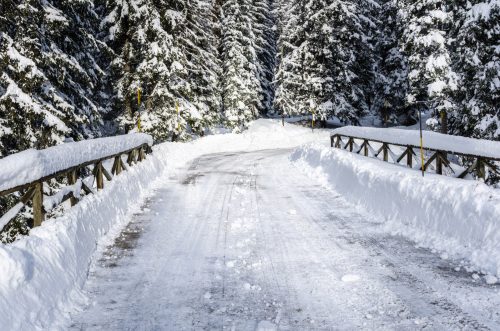Everything You Need to Know About Driving on Black Ice
One of the most dangerous aspects of black ice is that it’s nearly invisible. It’s created by a small coating of frozen moisture on top of the pavement, making it more slippery than regular ice because it lacks air bubbles or slope variations that could provide traction.

This winter season, Erie Insurance offers helpful tips on what to do if you have a run in with black ice. (PRNewsfoto/Erie Insurance)
Where is it?
- Areas of roads that receive little or no sunlight. These stretches of road are slower to warm and are more likely to create black ice.
- Seldom-used back roads. That’s because increased road traffic creates friction, warming busier roads and preventing ice formation.
- Tunnels and underpasses. They provide plenty of shade for black ice to develop.
- Bridges. They are susceptible because their height gives them greater exposure to cold winds.
How should you drive on it?
- The slower you travel, the lower your chances of skidding—and the less severe any skid will be.
- Don’t use cruise control. Your vehicle will try to maintain speed with no regard for the dangerous conditions beneath it.
- Steer with clean movements. Avoid the urge to make jerky, reactive movements that could cause your vehicle to skid.
How can you recover from a black ice skid?
- Front-wheel drive: Turn the steering wheel into the skid. If the skid reverses, change the direction of your steering wheel to follow the skid. Allow the wheels to maintain their speed—don’t apply the brakes or the accelerator. If your vehicle has a manual transmission, push the clutch. Your car will begin to gain traction as the wheels’ speed catches up to the car. Remember, you may need to make several wheel corrections before the car gains traction.
- Rear-wheel drive: Steer in the direction you want to go. This may mean a counter-steer if the back of your vehicle swerves away from this direction. Be gentle with the wheel as an overcorrection could send your vehicle’s back end in the opposite direction. Once you straighten out, apply gentle pressure to the accelerator until your speed matches the road speed.
- All-wheel drive without antilock brakes: Resist slamming the brakes when you start to skid. This is especially important with all-wheel drive vehicles because you are cutting power to all four wheels, making the vehicle operate like a front or rear-wheel drive vehicle. Instead, give the brakes a repeated light tap (known as pumping the brakes) while steering the wheel with simple, precise movements until you navigate yourself out of the skid.(It’s important to brake normally if your car has anti-lock brakes. Don’t pump your brakes; the car automatically does that for you.)






